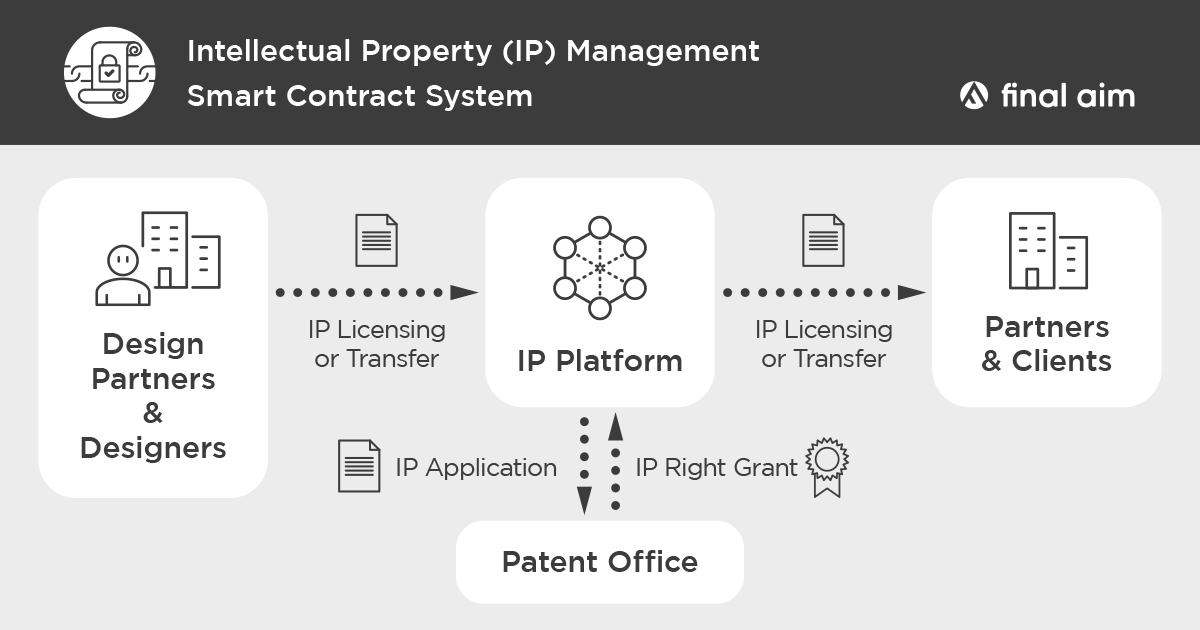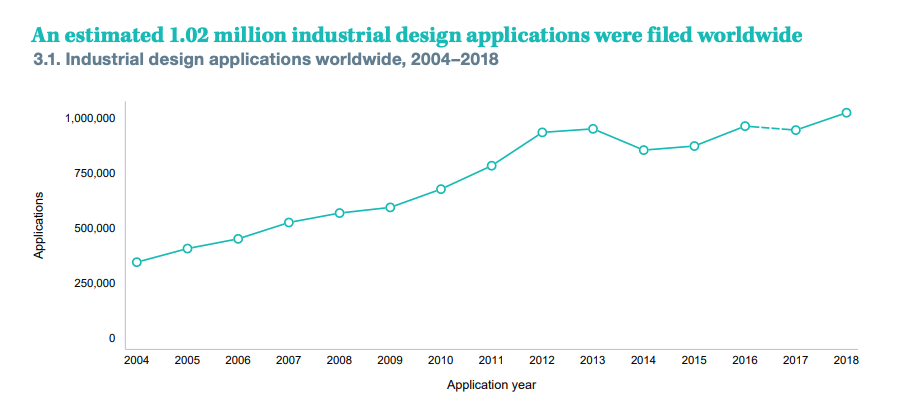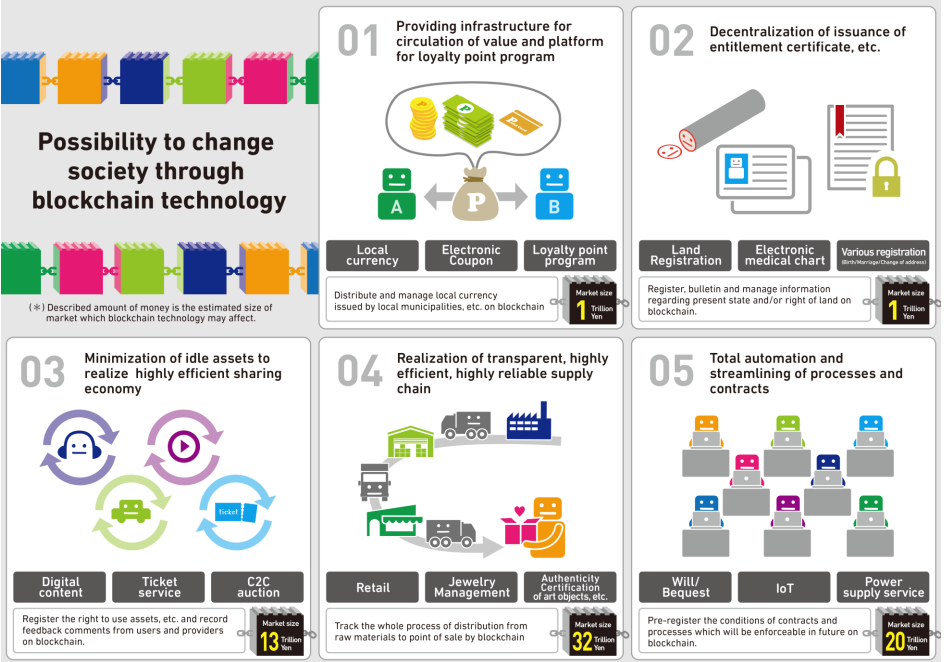Final Aim Filed Patent for Intellectual Property Management System
Tokyo Japan, March 19, 2020 – Final Aim, Inc. (Final Aim) filed a patent (No. 2020-34812) for intellectual property (IP) management system on March 2, 2020.
With this smart contract management system by blockchain technology, Final Aim enables accurate IP and design patent management in startups, for example, where minimizing corporate value assessment in the due diligence process is imperative.

Final Aim’s vision is “Supporting all innovators that challenge Zero-to-One and create new industries”.
The company has been focused on developing its service and product to create the world where all challenges are encouraged.
To further enhance the company activities, Final Aim filed a patent for the IP management system as its very first patent application.
Compared with large corporations, not many startups own internal IP departments. However, IP management is highly demanded at venturing business not only in IPO and M&A but also in fundraising.
What is Intellectual Property?
Intellectual property (IP) is a category of property that includes intangible creations of the human intellect. There are many types of intellectual property, and some countries recognize more than others. The most well-known types are copyrights, patents, trademarks, and trade secrets.
The main purpose of intellectual property law is to encourage the creation of a wide variety of intellectual goods. To achieve this, the law gives people and businesses property rights to the information and intellectual goods they create, usually for a limited period of time. This gives economic incentive for their creation because it allows people to profit from the information and intellectual goods they create. These economic incentives are expected to stimulate innovation and contribute to the technological progress of countries, which depends on the extent of protection granted to innovators.
– Wikipedia (link)
However, securing resources in corporate management is hard at agile startup environment.
Although the global numbers of patent application are growing, it is often the case that not many startups file patents in the course of their business activities.
Having an internal IP department and an assigned patent attorney should be ideal for startups, but these resources weigh heavy at initial phase.

– World Intellectual Property Indicators 2019 by World Intellectual Property Organization (WIPO) (link)
Furthermore, a design patent and its importance in the business strategy is often overlooked among the startup founders.
What is Design Patent?
A design patent is a form of legal protection granted to the ornamental design of a functional item. Design patents are a type of industrial design right. Ornamental designs of jewelry, furniture, beverage containers, and computer icons are examples of objects that are covered by design patents.
– Wikipedia (link)

– World Intellectual Property Indicators 2019 by World Intellectual Property Organization (WIPO) (link)
To solve this and related major issues, Final Aim developed design patent management system applying blockchain technology and filed a patent for IP.
This smart contract system enables to minimize corporate value assessment in due diligence process.
What is Smart Contract?
A smart contract is a computer protocol intended to digitally facilitate, verify, or enforce the negotiation or performance of a contract. Smart contracts allow the performance of credible transactions without third parties. These transactions are trackable and irreversible.
Proponents of smart contracts claim that many kinds of contractual clauses may be made partially or fully self-executing, self-enforcing, or both. The aim of smart contracts is to provide security that is superior to traditional contract law and to reduce other transaction costs associated with contracting. Various cryptocurrencies have implemented types of smart contracts.
– Wikipedia (link)
A smart contract is part of blockchain technology that is now being widely tested in POC (Proof of Concept) projects, especially in managing contracts and documents.
There is plenty of room for improvement in blockchain technology, however, the business value-add of blockchain is forecasted to grow more than $176 billion by 2025, and then it will exceed $3.1 trillion by 2030. (Gartner Research: link)
What is Blockchain?
A blockchain, originally block chain, is a growing list of records, called blocks, that are linked using cryptography. Each block contains a cryptographic hash of the previous block, a timestamp, and transaction data.
By design, a blockchain is resistant to modification of the data. It is “an open, distributed ledger that can record transactions between two parties efficiently and in a verifiable and permanent way”. For use as a distributed ledger, a blockchain is typically managed by a peer-to-peer network collectively adhering to a protocol for inter-node communication and validating new blocks. Once recorded, the data in any given block cannot be altered retroactively without alteration of all subsequent blocks, which requires consensus of the network majority.
– Wikipedia (link)

– Survey on Blockchain Technologies and Related Services by the Japanese Ministry of Economy, Trade, and Industry (link)
As filing the patent, Final Aim will be accelerating the product development, business development, and hiring, and enhancing on achieving our corporate vision of “Supporting all innovators that challenge Zero-to-One and create new industries”.
About Final Aim
Final Aim, Inc. is a firm provides hands-on design & technology.
The company cooperates with startups, labs, and MNCs, accelerating ambitious ideas & technologies to realize great design & business.
Headquarter Location: Tokyo, Japan
Founders: Masafumi Asakura, Yasuhide Yokoi
Founded Date: December 2019
Services: Business Design / Industrial Design / UI & Software Design / Technology Strategy / Financial Strategy / IP Strategy
URL: https://final-aim.com
Contact: Masafumi Asakura (m-asakura@final-aim.com)